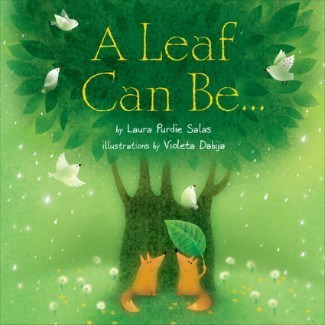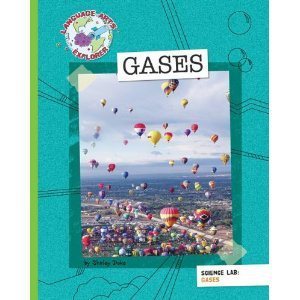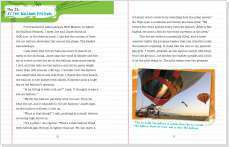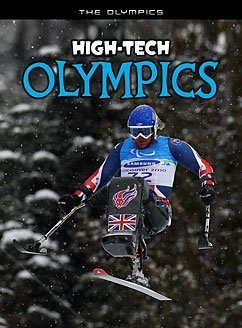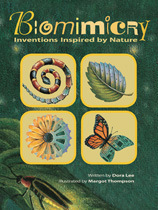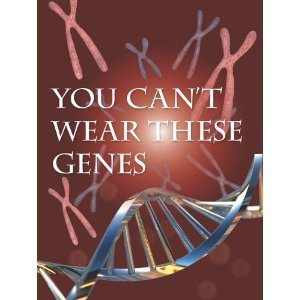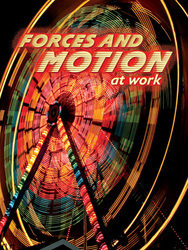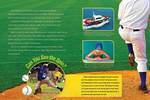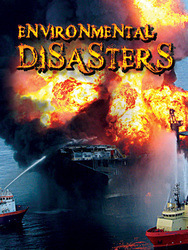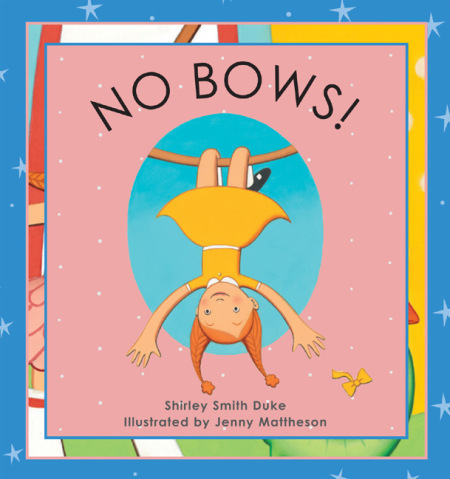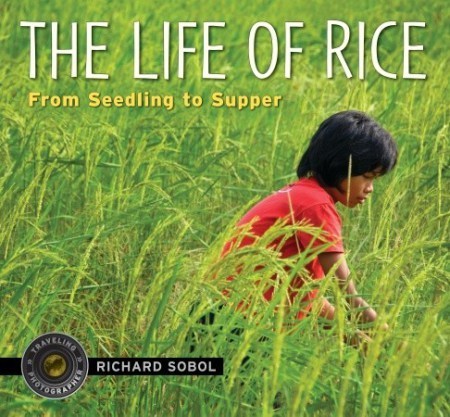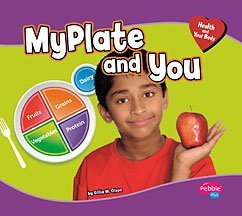Shirley Smith Duke's Blog, page 6
January 24, 2012
A Leaf Can Be…
By Laura Purdie Salas
Illustrations by Violeta Dabija
Millbrook Press, 2012
ISBN #978-0-7613-6203-6
Grades K-2
Nonfiction picture book
"A leaf can be a…Shade spiller…Mouth filler…Tree topper…Rain stopper…."
Spare, simple verse follows the many ways leaves contribute to nature and life in this lovely, appealing picture book. The job of leaves changes with the changing seasons and the book traces these events with Salas's lyrical poetrytext. Soft greens wash the pages until the seasons change and Dabija's mixed media art makes the book lovely and soft, inviting the reader into a gentle, and sometimes not so gentle, world of nature.
Back matter includes specific facts and examples of each of the word choices used. The book also has glossary and further reading suggestions.
Activity
Take a leaf walk. Each time you see a different kind of leaf, have one child collect one. Back inside, draw outlines of each leaf. Then decide on a way to organize the leaves by finding similar characteristics. Post and label your collection with the categories.
Scroll down at this site to see lots of leaf activities.
The author has a site with activities to accompany the book. She also has links to fun leaf activities there.
National Science Standard: Variation of traits; structure and function
Book provided by Lerner.








January 17, 2012
GASES
By Shirley Duke
Cherry Lake, 2012 Language Arts Explorer Science Lab
ISBN #978-1-61080-203-1
Grades 4-8
Facts set in real-life, fictional narratives
"Maria Lee is researching gases for an article in Chemistry Kids magazine. She's meeting with experts to learn about gases and what they do. Carry out your mission by reading her journal."
Combining language arts with science is a terrific idea. Writing this book was harder for me than straight science, however. Weaving the facts into fictional, yet real-life situations isn't as easy as I thought it would be. The book turned out to be fun and a fascinating way to integrate reading and science. With many of the testing passages about science, it gives readers a head start in practicing reading in a fun way with fascinating facts.
You can imagine the mirth that greeted me when I announced to my family (all male) I was writing a book about gases. Once the jokes died out, I realized I didn't know too much about gases, for all my science background. I turned to Brian Anderson (aka Pinata Boy) for some direction. Thanks, Brian. He pointed me to some chemistry books that really helped.
Gases is about the many ways knowledge of gases is used in everyday life. It explores ways science helps provide information and gives the readers opportunities to question, predict, problem solve, explore, and explain the science behind gases.
The book begins with a chemistry teacher asking questions about simple gas experiments. The journal writer goes out to find the answers by talking with people who deal with gases in the field. She visits a bean field, where a scientist is monitoring air quality for pollution levels. From there she travels to a dairy farm to learn about methane, a greenhouse gas. Next she travels to the Albuquerque Balloon Festival and then an automobile testing lab, where gases must be compressed to burn to run cars.
Back matter includes questions to consider, a glossary, web sites, further missions, and an index. This is a book that belongs in the language arts classroom as well as a science class. It's fun and fact-filled, and readers will know more about how scientists work when they are finished.
Activity 1
Carry out some of the experiments in the opening pages. Write them up using the scientific method.
Here's a good clear explanation of the scientific method.
Activity 2
Explore what sorts of jobs are available to chemists and chemistry majors (who often work with gases). Look up the educational requirements.
Check out the government Occupational Outlook Handbook to find out about jobs and gases in chemistry.
Here's another kind of job involving gases.
Wow! This book hit some interesting standards.
National Science Standards: Structure and Properties of Matter, Chemical Reactions, Energy in Chemical Processes and Everyday Life, Information Technologies and Instrumentation.
Book provided by publisher as author copy.








January 10, 2012
High-Tech OLYMPICS
Olympic Series
By Nick Hunter
Heinemann Library, 2012
ISBN #9781410941213
Grades 3-5
Nonfiction
"In the Olympic stadium, three athletes stand on the medal podium. They wear medals around their necks, a bronze medal for the athlete who finished third, silver for second, and gold for the Olympic champion. The athletes have proved they are the best in the world."
Winning a medal at the Olympics takes skill, dedication, and hard work. But without technology, Olympic athletes are at a distinct disadvantage. High-Tech Olympics identifies the variety of technology used to improve the performance of athletes in their sports through health, clothing, and tools used in their individual sports. Divided into different sports, the book tells of the uses technology has provided in that sport. Individual sidebars give additional information about sports and technology in brightly colored boxes, including some para-Olympic information. Also mentioned is how technology has helped limit the tools when they grew too helpful to be safe.
Large photos with captions support the thorough text and later chapters include cheating, the future of technology, drug testing, and the limits of technology. Back matter has an Olympic record spread for different sports and how technology has changes, and index, and a glossary.
As a long time Olympics lover, this book was a fascinating and fun read. Want to include more technology information in your class, home, or library? This book is a wonderful way to do so and is timely with the 2012 Olympics taking place this summer inLondon. Wish you could be there? Read this book!
Activity 1
Introduce the metric system by looking up the units. Then look up the lengths of some of the running races in the Olympics. Convert the metric units toU.S.standard units. Discuss which system is easier to use!
Steve Spangler's site has some more about technology and the Olympics.
The pictures on this page show the running event lengths.
See more events with metric measures here.
This site has good information about the metric system.
This site has information about conversions. Choose your method.
Activity 2
Explore the technology of one Olympic event and identify ways it has changed, helped, or improved the sport.
National Science Standards: Interdependence of Science, Engineering, and Technology; Influence of Engineering, Technology and Science on Society and the Natural World
Book provided by Capstone Press








January 3, 2012
BIOMIMICRY Inventions Inspired by Nature
I'm a Round 2 Cybils judge for the Middle Grade/Young Adult Nonfiction. Congratulations to all the nominees and finalists. See the list of finalists in this category here.
Now back to 2012 SimplyScience.
Biomimicry Inventions Inspired by Nature
By Dora Lee
Illustrated by Margot Thompson
Kids Can Press, 2011
ISBN #978-1-55453-467-8
Grades 4-7
Nonfiction
"Somehow, every other species has made this planet its home without destroying it. If they can do it, why can't we?
More and more, people are realizing how much we can learn from nature. Mabye what works in nature will work for us, too. These ideas lie at the heart of biomimicry—'bios' means life and 'mimicry' means imitating."
Biomimicry explores patterns found in the diversity of nature as the inspiration for technology and inventions that benefit people. From nature's sustainable patterns, people are inspired to use those patterns to solve current problems on Earth and beyond. The book gives specific examples of ways nature has triggered useful inventions and suggests possibilities for how it may help our future. From Velcro to bullet trains, examples abound. Short, information- packed sections about the different nature-inspired inventions follows an introduction section that organizes the inventions in that group.
Subdued earth tones in the acrylic on canvas highlight the text and the forms in nature that inspired the technology. The art suggests rather than details the natural inspiration, which is well covered in the densely packed pages. The overall look suggests that it is for older readers and not a young children's picture book. The final spread concludes with a charge to sustain the future of humans on Earth and live within the limits of the web of life on this planet.
This book provides a fascinating look at a range of inventions resulting from nature. It gives a challenge and inspiration to look to nature for solutions to very real problems on Earth. The book includes a glossary and index.
Activity
Review some of the ways humans have adapted inspiration from nature using examples in the book. Then have the readers create their own design for an invention based on a form in nature. The "On the Move" chapter provides adaptable suggestions.
Here are some examples of biomimicry.
This site has more information about biomimicry.
National Science Standard: biodiversity and humans; influence of engineering, science, and technology on society and the natural world
Book provided by publisher for Librarians' Choices book review committee at TWU.
Olympic Technology will be here next week. I left the book behind while traveling!








December 27, 2011
Genes and Infections
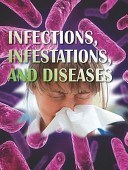 Infections, Infestations, and Diseases
Infections, Infestations, and Diseases
Enjoy the holiday season! SimplyScience is revisiting my first two science books while I spend the week with family. Thank you to my readers. I appreciate all the visits to SimplyScience and the kind comments you leave. I write this blog because I love books and science.
I'll start the New Year with a terrific book on Olympic technology and I still have one more of my own! Happy New Year!








December 20, 2011
FORCES AND MOTION at Work
By Shirley Duke
Rourke Publishing, 2012
ISBN #978-1-61741-788-7
Grades 4-6
Nonfiction
"Climb aboard a roller coaster and hang on! It jerks and rattles to the top of a slope. It hovers a second before plunging into a stomach-thrilling drop. The turns sling riders from side to side. A jolting stop forces everyone backward. The ride is over."
The physical science branch is the part of science I found most difficult in school. When I wrote this book, I had to look up so much in order to understand it before I could put it at a level for the readers to understand. My work paid off! This book required the least of any editing of the books I've written for this series. And I've come to have an interest in this subject more and more as new information comes to light about forces in atoms, space, and beyond.
Forces and Motion at Work defines, explains, and shows the nature of the effects of forces in our daily lives. Without seeing forces, examples have to show their actions and how they work. The laws of motion are described and explained, and changes in those forces are explored to show readers what they are and do. Energy of all kinds is discussed and supported by charts and captions in the book. Harnessing energy and how people use it is explained, and ways people use machines completes the book's text.
Detailed captions add additional information to the abundant photographs. Bright charts provided more facts to keep the reader moving from one concept to the next. Several hands-on activities invite readers to try out their newly learned knowledge. Try out this book and find out first hand how fascinating forces can actually be!
Forces and motion ideas make terrific science fair projects. Sports fans will enjoy using this knowledge, too. My sons played baseball and one of them pitched. They knew more about it than I originally did as a science teacher!
Activity
Use the scientific method to write up the experiment on page 6 before reading it aloud. Then perform the activity on page 6 and record your results.
Here's a form to write up the experiment.
Find lots of good information on physical science at this site.
This site has good interactive lessons on forces and motion.
Arrow down to the video list for simple explanations about the laws of motion at this site.
National Science Standard: forces and motion, types of interactions, definitions of energy, conservation of energy and energy transfer, relationship between energy and forces
Book provided by Rourke Publishing to author–me!








December 14, 2011
Environmental Disasters
By Shirley Duke
Rourke, 2012 (available now)
ISBN #978-1-61741-784-9
Grades 4-6
Nonfiction
"In 2010 an explosion shattered a quiet April evening in theGulf of Mexico. Flames roared into the air on the Deepwater Horizon offshore oil platform. Startled workers scrambled to escape. Most of them reached safety. Millions of gallons of light crude oil gushed from the site."
After writing a report on fires in 7th grade, my interest in disasters grew, along with learning the science of them. It's interesting that I ended up writing this book. It followed Enterprise STEM and Forces and Motion at Work, and it was fascinating to research. I learned much more about our environment and the charge we have to keep it healthy. The most interesting part of writing this book was revisiting the history of some disasters that had happened in my younger days.
Each section in Environmental Disasters relates the situation about how the disaster happened, explains the consequences, and tells what may prevent it in the future. The book opens with the Deepwater Horizon oil spill. It goes on to discuss solid wastes like those at Love Canal and the problems with plastics and electronic wastes, nuclear meltdowns here, in Chernobyl, and Japan, acid rain, and the ozone. It includes a chart of small changes children can make to get involved in making the Earth safer. Each chapter includes diagrams that illustrate new vocabulary and more details about the processes involved.
The book has bright photographs with captions containing pertinent information not included in the text. It has a glossary, websites, and index, and an about the author section.
Activity 1
Look up information about the Chernobyl nuclear meltdown, the Three Mile Island disaster, and the more recent Japanese reactor problems following the tsunami. Use a Venn diagram to contrast and compare two of those disasters and their results.
Activity 2 (easier)
Make a timeline of disasters and display it. Use the book's information to begin and find others to include.
Find more disasters at this site.
National Science Standards: matter and its interactions; human impacts on Earth systems








December 6, 2011
2011 December Roundup
Illustrated by Jenny Mattheson
ISBN #1561453560
Peachtree Publishers, 2006
picture book
ages 2-6
I wrote this book in 2001 while taking Anastasia Suen's picture book class. I was scared to read the manuscript, so she did. She said it would be a book, and she was right! There's nothing like having your first book published. I've moved more toward nonfiction now because of my love for science, but I'm still working on picture books, too.
December is a special month to me because my anniversary, birthday, and Christmas fall within one week. Couldn't help the birthday and love made me move the anniversary date forward to make it a fun-filled week.
So to celebebrate my favorite month and the start of my third year of blogging, I'm revisiting my first post–NO BOWS!–and finishing 2011 with my latest nonfiction from Rourke. I was new to blogging and I've found my focus by now. But I'd like to show off my first book and blog. It makes a great gift for children and celebrates their spirit and emerging personalities.
No Bows! is a 50 word picture book about a determined child who has her own likes and dislikes, but at the end of the day, she and her parents agree on two things. The book was based on my niece, who had her own ideas about many things, and my son who hated shirts with collars and blue jeans as a child.
Read the book, then go back go back and follow the actions of the lizard. Look for places the illustrator incorporated more lizard antics and themes.
To include a science based activity, identify the categories in each pair of choices. Have the students add their own like and dislikes to their chart. Identify other things in the classroom that can be grouped and practice grouping by writing them in a variety of categories. This activity helps children understand grouping and classifying.
The national science standard: understanding systems, order, and organisms.
Go to www.shirleysmithduke.com or www.peachtree-online to see the teacher guide for No Bows! (that I wrote). I also have a pictograph activity and coloring page on my website. Click on the books tab and click on No Bows!








November 29, 2011
The Life of Rice
From Seedling to Supper
By Richard Sobol
Photographed by Richard Sobol
Traveling Photographer Series
Candlewick Press, 2010
ISBN #978-0-7636-3252
Ages 5-8; could be read with older children
40 pgs
"When I saw a woman ahead in a bright yellow silk shirt frozen in a soft blanket of green rice plants, I couldn't bear it anymore. I asked permission to stop for just one minute, and the Thai police commander, Colonel Dewa, reluctantly agreed. 'Make it quick,' he said as I grabbed my camera. 'I am only letting you do this because for Thai people, rice is what keeps us alive. It is as important to us as the air that we breathe.'"
Author Richard Sobol was in Thailandfor another reason the first time, but he went back to learn more about rice and photograph this grain so valuable to so many people in the world. The Life of Rice documents the life cycle of rice from the author's invitation from the king ofThailandto attend the Thai National Celebration of Rice to the harvesting of the rice from the fields.
Large photographs on each spread document the progress of the growing rice alongside the Thai people growing it. The work in the fields is explained and the photos show the progress at each step. Detailed captions add to the information of the text.
The book is rich with facts about rice and the Thai culture as well. It would lend itself to a social studies lesson or a science lesson. Seasons, monsoons, life cycle, and cultures follow naturally from reading this book. I first read it as a Cybils NF picture book first round judge last year and liked it, but it didn't make the finals. I think it's quite suited to an older reader, too. It's a fascinating look in detail of an interesting plant and makes a fascinating read.
Activity 1 (for younger ages)
Use a graphic organizer or circle to trace the life cycle of a rice seed. Label and illustrate each step. Cook rice and share it with the learners.
Learn about the rice life cycle here.
This chart shows the rice growth at stages.
Activity 2
Look up the different varieties of rice. Create a comparison chart to show their characteristics. Find a recipe that incorporates each kind to add to the chart.
This site tells about rice and cooking the varieties.
Read more about the kinds of rice at this site.
Activity 3
Research the nutrients in rice. Write an explanation of what they are and how the body uses them.
This site includes information about the different kinds of rice.
National Science Standard: growth and development of organisms
Book provided by publisher for 2010 Cybils committee.








November 23, 2011
MyPlate and You
MyPlate and You
By Gillia M. Olson
Capstone, 2012
Health and You Body Series
ISBN: 9781429668095
Grades PreK-2
"My plate teaches people about healthy eating. This guide show how much to eat from each food group every day."
I've always loved the food groups. I started with the four basic food groups, progressed to the food pyramid, and now there's the MyPlate guidelines. I've taught health many times and have enjoyed the food and nutrition information. I love to cook—maybe that's why! Right before Thanksgiving is a good time to write about this book, even though butter becomes a food group for me when preparing Thanksgiving dinner.
This book for early readers follows five basic groups, separating fruits and vegetables into separate plate graphics. Each groups discusses what's in the group and gives the amounts that should be eaten for a healthy diet.
Large photographs show the foods on the right-hand side of the spread. Five fun facts about food complete the final spread. The book includes a glossary, read more section, sites, and a thorough index.
This book would be a great way to introduce a nutrition unit or spark a discussion of good eating. It would be helpful when introducing ounces and pounds in math, too. It's an interesting book written in a simple way to help kids learn about food in a time when fast food is starting to tempt them at earlier and earlier ages.
Activity
Use the graphic here to draw and color in the different groups. Under the graphic or on the back, label five columns with the name of each group and cut out or draw pictures of foods. Put them in the proper column and write their names.
Learn more about food groups here.
The book shows readers the federal site and recommendations.
See my post on Rah, Rah, Radishes by April Pulley Sayre for more food activities.
National Science Standard: growth and development in organisms
Book provided by Capstone Press








Shirley Smith Duke's Blog


